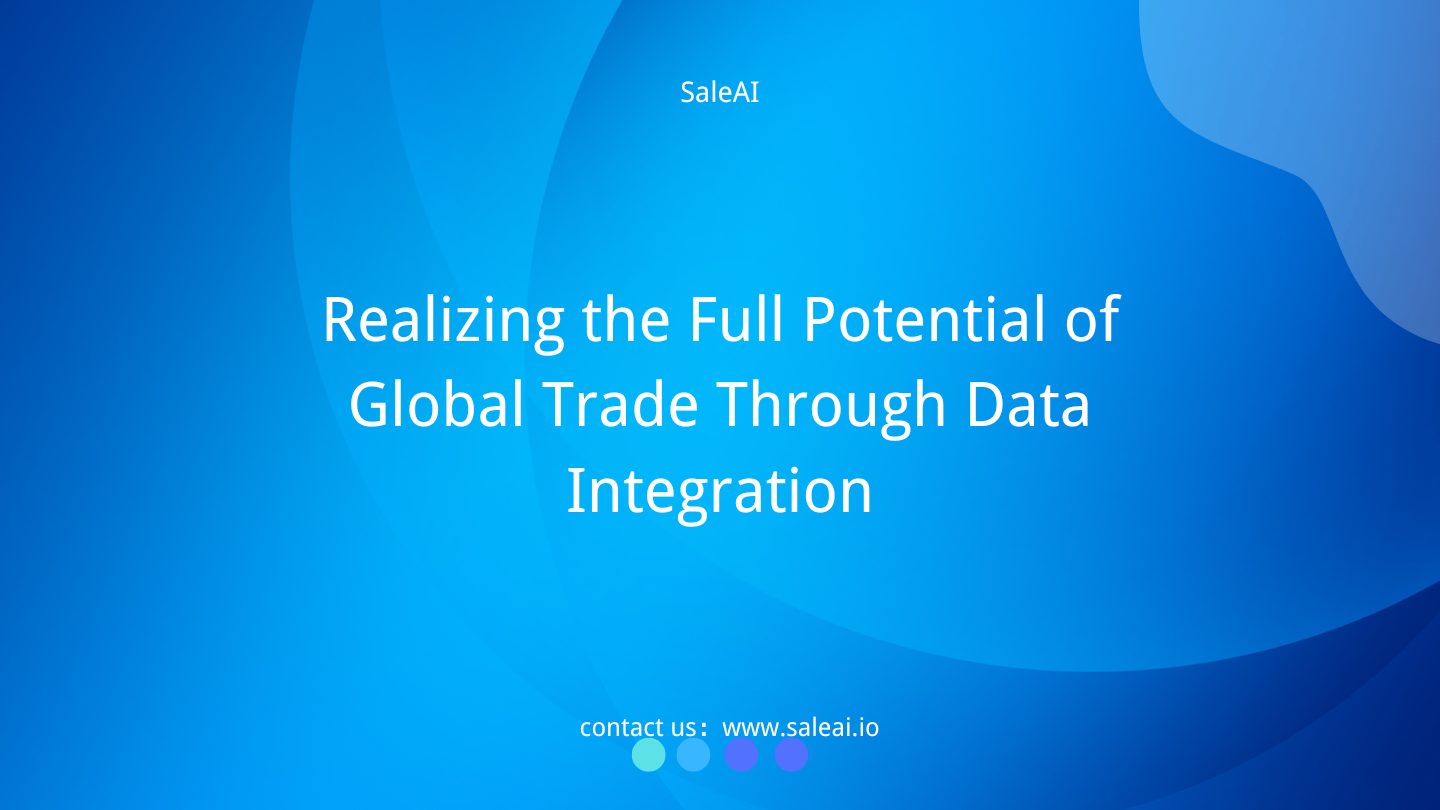Global Trade’s New Frontier: Data Integration
Global trade has always been about connections—connecting markets, products, and people. However, in today’s digital age, there’s another connection shaping the future of trade: data integration.
In the past, trade data was often scattered across multiple systems, departments, and regions, making it difficult for businesses to access the insights they needed. But as industries embrace digital transformation, data integration has emerged as the key to turning fragmented information into a unified, strategic asset.
This article will explore what data integration means for global trade, why it’s critical for success, and how businesses can harness it to unlock growth opportunities.
Understanding Data Integration in Global Trade
Data integration involves combining data from multiple sources into a unified system. In global trade, this could include combining:
- Customs and Trade Flow Records: Import/export data from various countries.
- Supply Chain Data: Supplier details, shipping routes, and inventory levels.
- Market Insights: Regional demand trends and competitor activity.
- Regulatory Data: Compliance requirements and tariff updates.
By integrating these datasets, businesses gain a 360-degree view of their trade operations, enabling them to make faster, more informed decisions.
Why Data Integration is Transforming Global Trade
a. Breaking Down Silos
One of the biggest challenges in global trade is the fragmentation of data across different systems and departments. This leads to inefficiencies, miscommunication, and missed opportunities. Data integration eliminates silos, creating a single source of truth that everyone in the organization can access.
- Example: A consumer goods exporter consolidates data from its logistics team, finance department, and regional offices to streamline operations and reduce delays.
b. Enabling Real-Time Decision-Making
In global trade, timing is everything. Integrated data systems provide businesses with real-time insights, allowing them to respond quickly to market changes, supply chain disruptions, and competitor actions.
- Example: A tech company uses integrated trade and supply chain data to reroute shipments after detecting port congestion in real time.
c. Improving Compliance and Risk Management
Global trade regulations are complex and ever-changing. Data integration simplifies compliance by consolidating regulatory data, ensuring businesses stay updated and avoid costly penalties.
- Example: An apparel manufacturer integrates tariff and regulatory data to ensure compliance with new sustainability requirements in the EU.
d. Enhancing Competitor Insights
Integrated data allows businesses to analyze competitors more effectively, tracking trade flows, buyer relationships, and market entry strategies.
- Example: A food exporter integrates trade flow and buyer data to identify competitors’ top markets and adjust its approach accordingly.
e. Driving Operational Efficiency
By centralizing data, businesses can automate manual processes, reduce redundancies, and improve efficiency across their operations.
- Example: A logistics provider integrates supply chain and shipment data to automate route optimization and reduce delivery times.
The Business Benefits of Data Integration
a. Unified Insights for Better Decisions
Data integration transforms disparate datasets into a cohesive system, providing businesses with a clear picture of their operations and opportunities.
b. Faster Time to Market
With integrated data, businesses can identify demand trends more quickly and bring products to market faster.
c. Cost Savings
Integrated systems reduce duplication, cut manual processes, and improve resource allocation, leading to significant cost savings.
d. Competitive Edge
Businesses that leverage integrated data gain a strategic advantage by making faster, smarter decisions than their competitors.
e. Future-Ready Operations
Data integration lays the foundation for advanced technologies like AI and machine learning, which can further enhance decision-making and efficiency.
How to Approach Data Integration in Global Trade
Step 1: Identify Data Sources
Start by mapping out all the sources of data within your business, including trade records, supply chain systems, market reports, and regulatory updates.
Step 2: Choose the Right Tools
Use data integration platforms that are specifically designed for global trade, such as TradeLink AI by SaleAI, which simplifies the process of consolidating trade data from multiple sources.
Step 3: Focus on Key Metrics
Determine the metrics that matter most to your business, such as trade flow trends, buyer activity, or compliance rates, and ensure your integration efforts prioritize these areas.
Step 4: Automate Wherever Possible
Use automation to reduce manual work and ensure your integrated data is always up to date.
Step 5: Train Your Team
Ensure employees across departments understand how to access and use integrated data to make better decisions.
How SaleAI’s TradeLink AI Simplifies Data Integration
TradeLink AI by SaleAI is designed to help businesses integrate and leverage trade data more effectively.
Key Features Include:
- Comprehensive Trade Data Access: Consolidate data from over 130+ countries and 8 billion customs records into a unified system.
- AI-Driven Analytics: Use machine learning to uncover trends and generate actionable insights.
- Customizable Dashboards: Tailor your data integration to focus on the metrics that matter most.
- Real-Time Updates: Ensure your data is always current with real-time updates on trade flows, regulations, and market changes.
- Regulatory Compliance Tools: Simplify compliance with integrated regulatory data and alerts.
Why Choose TradeLink AI?
- Ease of Use: Intuitive interface that makes data integration accessible to all teams.
- Scalability: Suitable for businesses of all sizes, from SMEs to global enterprises.
- End-to-End Visibility: Provides a complete view of your trade operations, from supply chain to market trends.
Case in Focus: A New Approach to Data Integration
Let’s take a closer look at how data integration can transform a business:
Challenge: A mid-sized electronics exporter struggled with fragmented data across its supply chain, sales, and marketing teams, leading to inefficiencies and missed opportunities.
Solution: By implementing TradeLink AI, the company integrated its trade data, gaining real-time insights into buyer behavior, competitor activity, and supply chain performance.
Results:
- Reduced delivery times by 20% through optimized shipping routes.
- Increased market share in key regions by identifying emerging demand trends.
- Achieved full compliance with new trade regulations, avoiding costly penalties.
The Future of Data Integration in Global Trade
As businesses continue to digitize, the role of data integration will only grow. Key trends to watch include:
- AI-Powered Integration: Automation and AI will make data integration faster and more seamless.
- Blockchain for Transparency: Blockchain technology will enhance the accuracy and traceability of integrated data.
- IoT Integration: Connecting IoT devices with integrated data systems for real-time supply chain visibility.
- Collaborative Ecosystems: Shared data platforms that enable businesses to collaborate more effectively across supply chains.
Conclusion: Connect the Dots with Data Integration
In the fast-paced world of global trade, data integration is no longer optional—it’s essential. By unifying trade data, businesses can unlock insights, improve efficiency, and gain a competitive edge in an increasingly complex market.
With TradeLink AI by SaleAI, businesses can simplify the process of data integration and turn fragmented information into actionable insights. Whether you’re optimizing your supply chain, tracking competitors, or ensuring compliance, TradeLink AI provides the tools you need to succeed.





